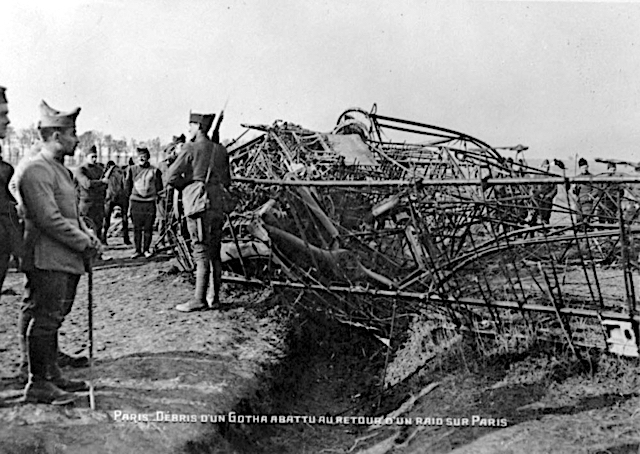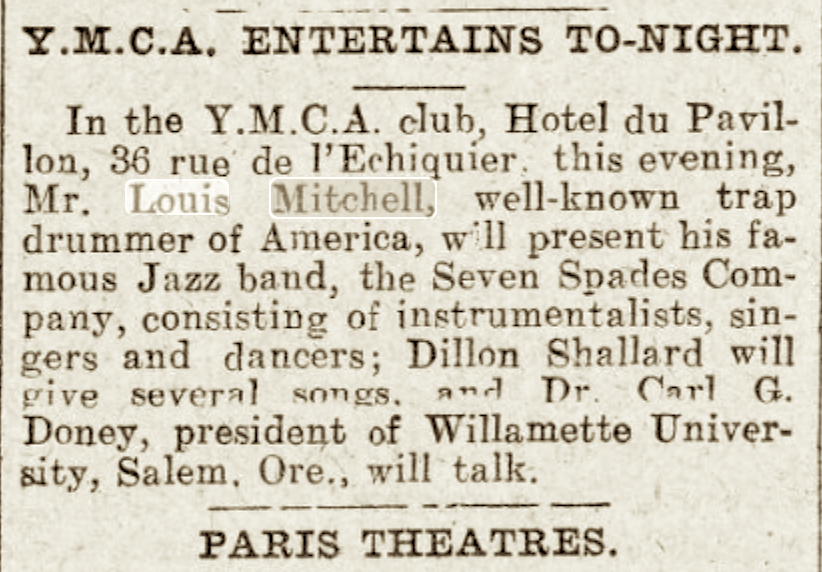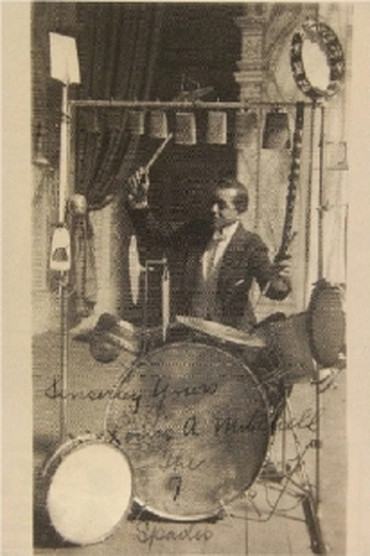And the Band Played OnAn exciting account of a Parisian air raid by an American eye-witness circulates in today's press. This correspondence by a US soldier is notable for multiple reasons. It references what must be the Gotha night raids of March 8 and 11: "
The attacks took place at night, and Parisians took sanctuary in the Métro stations. During a new attack on the night of March 11–12, a panic took place in the crowded Bolivar Métro station that caused the deaths of seventy civilians" (via wikipedia). It also notes the first shelling of Paris by Germany's new mammoth 211mm
Kaiser Wilhelm Geschütz - the longest artillery gun of the Great War: "
On March 23, the Germans introduced a new weapon to terrorize the Parisians: the long-ranged Paris Gun. It could fire shells 120 kilometers into the heart of the city. 303 huge shells were lobbed... The worst incident was on 29 March 1918, when a shell hit the roof of the St-Gervais-et-St-Protais Church, collapsing the roof onto the congregation then hearing the Good Friday service. A total of 91 people were killed and 68 were wounded. " (via wikipedia)
(from the Sunday Star, 21 April 1918):



But this story bears other connections to Great War aviation history. Clearly, Frank H. Baxter's biggest impression was not the roar of the bombers overhead but rather the underground sounds of a back American jazz band that had also taken refuge in the Paris Metro that night. Luckily he gives us the band's name - 'The Seven Spades'. It so happens that their bandleader was Louis Mitchell, a vaudeville artist and trap drummer. Similar to the African-American band leader James Reese Europe, Mitchell had toured with society dancer and future RFC pilot Vernon Castle, who headlined here in January 2023:
https://forum.ww1aircraftmodels.com/index.php?topic=12930.msg251050#msg251050, and landed up in France during the war. Not too long after today's news Mitchell would encounter another fellow expat African-American - pilot Eugene Bullard, whose Parisian nightlife expolirs have also headlined here:
https://forum.ww1aircraftmodels.com/index.php?topic=13750.msg255549#msg255549).
"
Soon many of the streets around Mitchell’s apartment started to echo to the sounds of Jazz. Jazz had come at the right time; its optimism, infectious energy, grace and good time rhythm helped people to live in the moment and to step out of the shadow of war. In post World War One Paris the French and everyone else was ready to dance, tap, clap, drink, shout and cheer... Because Bullard had connections in the growing black musicians’ community in Montmartre and among his upper class air force friends, he was soon organising jazz band gigs at society parties and weddings. Seeing the popularity and potential of jazz Bullard took drumming lessons from Louis Mitchell. He met Joe Zelli the American impresario. Zelli was a jazz club venue owner in Paris and Bullard was soon drumming and managing Zelli’s Royal Box Club at 16 bis Rue Pierre Fontaine." (via montmartrefootsteps.com)

(advert for an engagement published in the Paris edition of the New York Herald, 21 February 1918)


Here's a jazzy rag recording by Louis Mitchell of a song which may well have been heard by Frank H. Baxter as they shared shelter from the raiding German Gothas in the Metro beneath Montmartre on this night in 1918:
https://www.youtube.com/watch?v=GOr4Y7GBbP8&list=OLAK5uy_mjT_J8UJMErlCCHc_F-vUKCTS2opLljyU&index=25